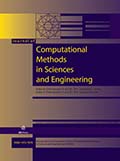Authors: Belkić, Karen | Belkić, Dževad
Article Type:
Research Article
Abstract:
In the very recent period Magnetic Resonance Spectroscopy (MRS) and Spectroscopic Imaging (MRSI) have become key diagnostic modalities for neuro-oncology. MRS and MRSI are now applied extensively for initial detection of brain tumours, for histopathologic classification, tumour localization and grading, as well as for assessment of response to therapy and for follow-up surveillance, striving, in particular, for earlier identification of recurrence. In this paper we review the current state of the art of MRS and MRSI for brain tumour diagnostics, highlighting the achievements, as well as remaining dilemmas. Clearly, MRS and MRSI represent an important advance for the detection
…and characterisation of tumours of the brain. However, there are still important shortcomings of the present applications of MRS and MRSI in neuro-oncology. First of all, very few of the currently assessed metabolite concentrations or ratios unequivocally distinguish intra-cerebral tumours from normal brain tissue. Moreover, changes in each of the metabolite concentrations and ratios are non-specific for cancer of the brain. In other words, non-neoplastic processes such as infection, stroke, demyelinating disorders, inter alia, frequently show spectral changes that are identical to those seen in brain tumours. Histopathological characterization and tumour grading, both crucial for clinical decision-making, have been greatly aided by MRS and MRSI. However, there are numerous contradictory findings in the literature. We demonstrate in this paper that many of the shortcomings of MRS and MRSI for neuro-oncology are directly related to the reliance upon the conventional Fourier-based framework for data analysis. We review the distinct advantages of the Fast Padé Transform (FPT) relative to the Fast Fourier Transform (FFT). Our focus is on those salient features of the FPT that are of critical clinical relevance for achieving an overall improved diagnostic performance of MRS and MRSI. These features are extremely stable and rapid convergence, as well as highly accurate quantification estimates of spectra from in vivo MRS time signals, as presently illustrated for data from the brain of a healthy volunteer. The next, and urgently needed step, is to more widely apply the FPT to in vivo MRS and MRSI signals from patients with brain tumours with the aim of tackling, in actual practice, the diagnostic dilemmas still plaguing neuro-oncology.
Show more
Keywords: brain tumours, metastatic disease, biomedical imaging, magnetic resonance spectroscopy, magnetic resonance spectroscopic imaging
DOI: 10.3233/JCM-2004-41-218
Citation: Journal of Computational Methods in Sciences and Engineering,
vol. 4, no. 1-2, pp. 157-207, 2004
Price: EUR 27.50





